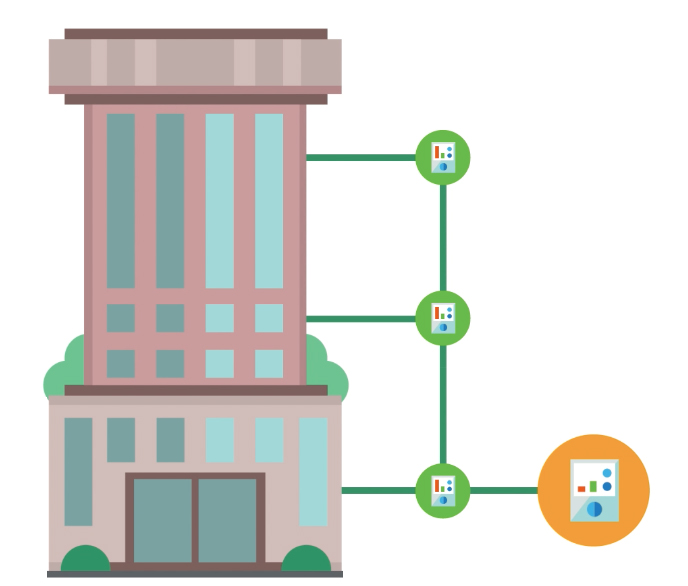Ensuring the sub-metering units you use for tenant recharging is accurate, especially with the recent increase in energy costs, has never been more vital. Inaccuracies cause major headaches and can lead to tenants either challenging their rates or leaving your premises altogether.
Sub-metering is the process of installing dedicated monitoring units downstream of your utility settlement (billing) meter. The use of sub-metering allows you to monitor individual areas or circuits. And the consumption data from these sub-meters is then used to charge tenants for their personal energy use.
Not only that, sub-metering can provide half-hourly profile graphs, meaning you can see how much energy individual areas use and when.

In October 2006, the European Measuring Instruments Directive (MID) 2004/22/EC was implemented to condense the requirements of ten different measuring instrument types, including gas and electrical energy meters. In April 2016, the original MID was replaced by the ‘recast’ MID (2014/32/EU) implemented by The Measuring Instruments Regulations SI 2016/1153.
Electricity, gas, water and heat meters are all covered under the MID directive. Unlike meters approved under GB national legislation, certification isn’t recognised as a separate process under the MID directive.
Sub-meters are certified, or they‘re not.
Non-MID meters are not approved for either primary (i.e. supplier-consumer) or secondary (i.e. landlord-tenant) billing applications.
Although there’s no statutory list of MID approved gas or electricity meters, MID approved gas and electricity meters can be identified by specific markings.
These consist of:
These symbols can sometimes be found on the rear of the unit and are not visible. And you might need to remove the meter from the wall to check.
If it doesn’t have these markings, it isn’t MID approved.
Old-school methods of tenant billing vary from splitting the building’s utility bills equally between the tenants. And another is charging based on the percentage of floor area a tenant occupies.
But as the description ‘old-school’ suggests, these methods are now an outdated way of gathering correct data.
Some tenants will use more energy than others, resulting in them paying for less than they use, while someone using very little will pay more.
Sub-metering is the best way to accurately identify consumption splits and ensure tenants are only billed for the energy they use.
A building management system (BMS) controls and automates several aspects of a building, from smart meters, heating, lighting and air conditioning to fire and smoke alarms, CCTV and security.
To drill deeper, a modern BMS can:

By connecting to your meters and managing the electricity usage in your building more effectively.
By monitoring the activity of water pumps and water distribution in your building.


By monitoring energy consumption, so you can reduce or switch off lighting in unused areas.
With CCTV surveillance, motion sensors, intrusion detection, motion sensors and door and turnstile control.


By monitoring the temperature, airflow and climate within the building.
Thanks to smoke detectors and fire alarms.

In short, using a building management system allows you to collect energy data more efficiently, so you don’t end up over or undercharging individual tenants.
If your meter was approved under GB national legislation before 30th October 2006. Or was in-service before 30th October 2016, it can be used for as long as it meets the requirements under the Gas Act 1986 and the Electricity Act 1989.
However, all meters used for billing purposes installed after 30th October 2016 must be MID approved.
Although historic installations can be left, because they’re not MID regulated the consumption figures cannot be guaranteed; therefore, tenants can dispute them.
If you’ve installed a new metering system since 2016 which doesn’t comply with MID regulations… and at the time of installation, it was stated to be for recharging purposes; it’s illegal to recharge your tenants using this system.
Using MID meters for energy management doesn’t hold the same legal requirement. However, we’d recommend you install MID approved meters to ensure the accuracy of the data you’re receiving.
If you’re unsure if your existing sub-metering installation is compliant with MID regulations. Or, if you’d like to replace your sub-metering system with a MID compliant version, Inteb can help.
Inteb’s metering team provides electrical tracing/schematics, hardware, installation and maintenance services for all utility metering, whether:
We can integrate meters with all reputable hardware and manufacturers’ variants to ensure you have the infrastructure that fits your building’s requirements.
See how we can help with MID compliance.